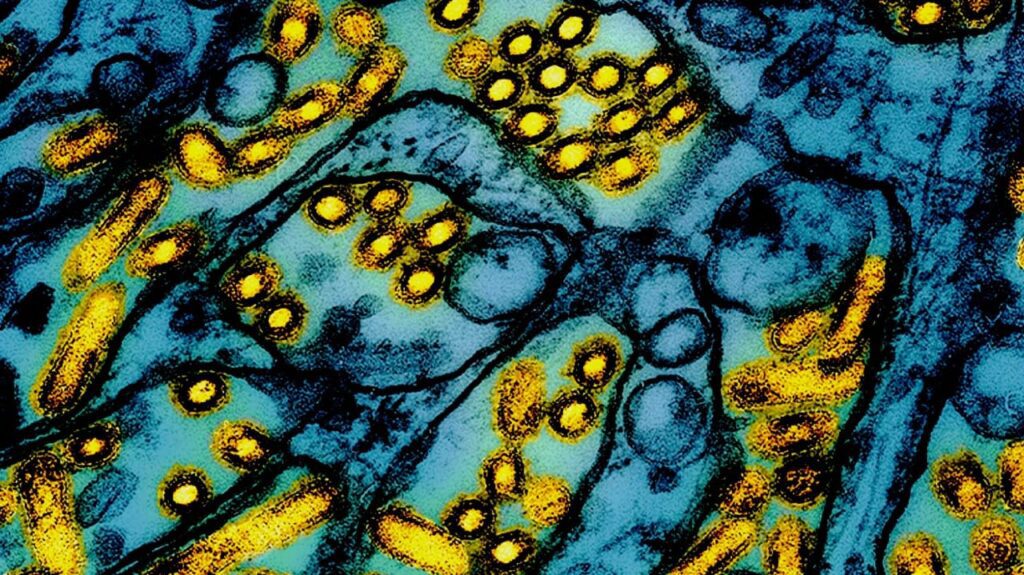
Is Bird Flu the Next Global Health Threat? Exploring the Risks and Realities of H5N1 in the US
Reports of the first bird flu-related death in the United States have sparked comparisons to the early days of the COVID-19 pandemic. While both viruses can cause respiratory issues, they differ significantly in their nature, transmission, and impact. The H5N1 strain of avian influenza has been a concern for decades, primarily affecting birds but occasionally crossing over to other species, including humans.
Unlike COVID-19, which rapidly spread person-to-person when it first appeared, bird flu has largely remained a zoonotic disease, spreading primarily between animals. However, with H5N1’s recent spread to mammals and its first recorded human death in the US, public interest and concern have grown. Here’s what you need to know about this virus, its potential risks, and the current measures in place.
Understanding Bird Flu: The Basics
Bird flu, officially termed avian influenza, encompasses several influenza virus strains that predominantly infect birds. The H5N1 strain, currently making headlines, is a highly pathogenic form of the virus. It has caused widespread outbreaks among birds, leading to significant mortality in poultry and wild bird populations.
Though rare, bird flu can jump species barriers, occasionally infecting humans and other mammals. Most human cases are isolated and do not result in sustained human-to-human transmission.
The Evolution and Spread of H5N1
H5N1 isn’t a new threat; scientists first identified it in geese in China in 1996. Over the years, the virus has reemerged in various regions, causing sporadic outbreaks. Its latest resurgence in North America, beginning in 2021, has been notable for its broader host range, infecting not only birds but also mammals such as sea lions and dairy cows.
Globally, H5N1 has been detected in over 48 species across 26 countries. In the US alone, it has affected more than 130 million birds since 2022 and caused sporadic human infections, with two severe cases reported in North America.
Could H5N1 Trigger a Pandemic?
For H5N1 to become a pandemic, it would need to acquire genetic changes allowing efficient human-to-human transmission. Viruses evolve through random mutations or by swapping genetic segments with other influenza viruses, a process known as reassortment.
Currently, H5N1’s ability to infect humans is limited. However, recent cases have shown genetic changes in the virus that may enhance its ability to infect human cells. While these changes are concerning, they remain insufficient for widespread transmission.
How Do Humans Get Infected?
Human infections typically result from close contact with infected birds or their environments. Activities such as handling sick birds, exposure to contaminated feces, or working in poultry farms pose significant risks. For dairy workers, exposure to infected milk during milking processes can also lead to infection.
Assessing the Current Risk
Despite isolated cases of severe illness, the Centers for Disease Control and Prevention (CDC) considers the risk of widespread transmission in humans to be low. Rigorous surveillance and contact tracing efforts are in place to monitor potential human-to-human spread.
Symptoms of H5N1 in Humans
The most common symptom among infected individuals is conjunctivitis (red, inflamed eyes). Other symptoms include fever, respiratory issues, and in severe cases, organ failure. Symptoms vary depending on the mode of exposure and the strain of the virus involved.
Safe Practices to Prevent Infection
- Avoid raw milk and undercooked poultry: Pasteurization and proper cooking temperatures effectively kill the virus.
- Practice good hygiene: Wash hands thoroughly after handling birds or visiting farms.
- Use personal protective equipment: Farmers and workers should wear protective gear when dealing with poultry or dairy cattle.
Testing and Diagnosis
If you develop symptoms within 10 days of exposure to sick birds or contaminated environments, consult a healthcare provider. Commercial laboratories such as Quest and Labcorp now offer testing for H5 viruses, making diagnosis more accessible.
Addressing the Animal Connection
Bird flu predominantly spreads among avian species, but its increasing presence in mammals poses additional concerns. H5N1 has been detected in sea lions, foxes, and even dairy cows, showing its ability to infect a wide range of hosts. This broader range increases the opportunities for the virus to evolve and potentially adapt to human hosts. Regular monitoring of animal populations is crucial for early detection and mitigation of potential outbreaks.
Vaccination and Preparedness
Vaccines are a vital tool in controlling the spread of infectious diseases. Efforts are underway to develop vaccines specifically targeting H5N1. While some vaccines exist for poultry, they are not widely used due to logistical challenges. For humans, experimental vaccines have been created and stockpiled as a precautionary measure, but these are not yet available for general use. Public health agencies continue to monitor the situation closely to determine when vaccination campaigns might be necessary.
Research and Scientific Advances
Ongoing research aims to better understand the behavior of H5N1, including how it spreads, mutates, and infects various hosts. Scientists are particularly focused on identifying genetic markers that indicate increased transmissibility or severity in humans. Advances in genomic sequencing and computational modeling have greatly enhanced our ability to predict and respond to potential outbreaks.
International Collaboration
Bird flu is a global issue requiring coordinated efforts among nations. The World Health Organization (WHO), along with other international bodies, works to share data, track outbreaks, and develop standardized protocols for response. Collaborative initiatives ensure that resources and knowledge are distributed equitably, especially in regions with limited healthcare infrastructure.
